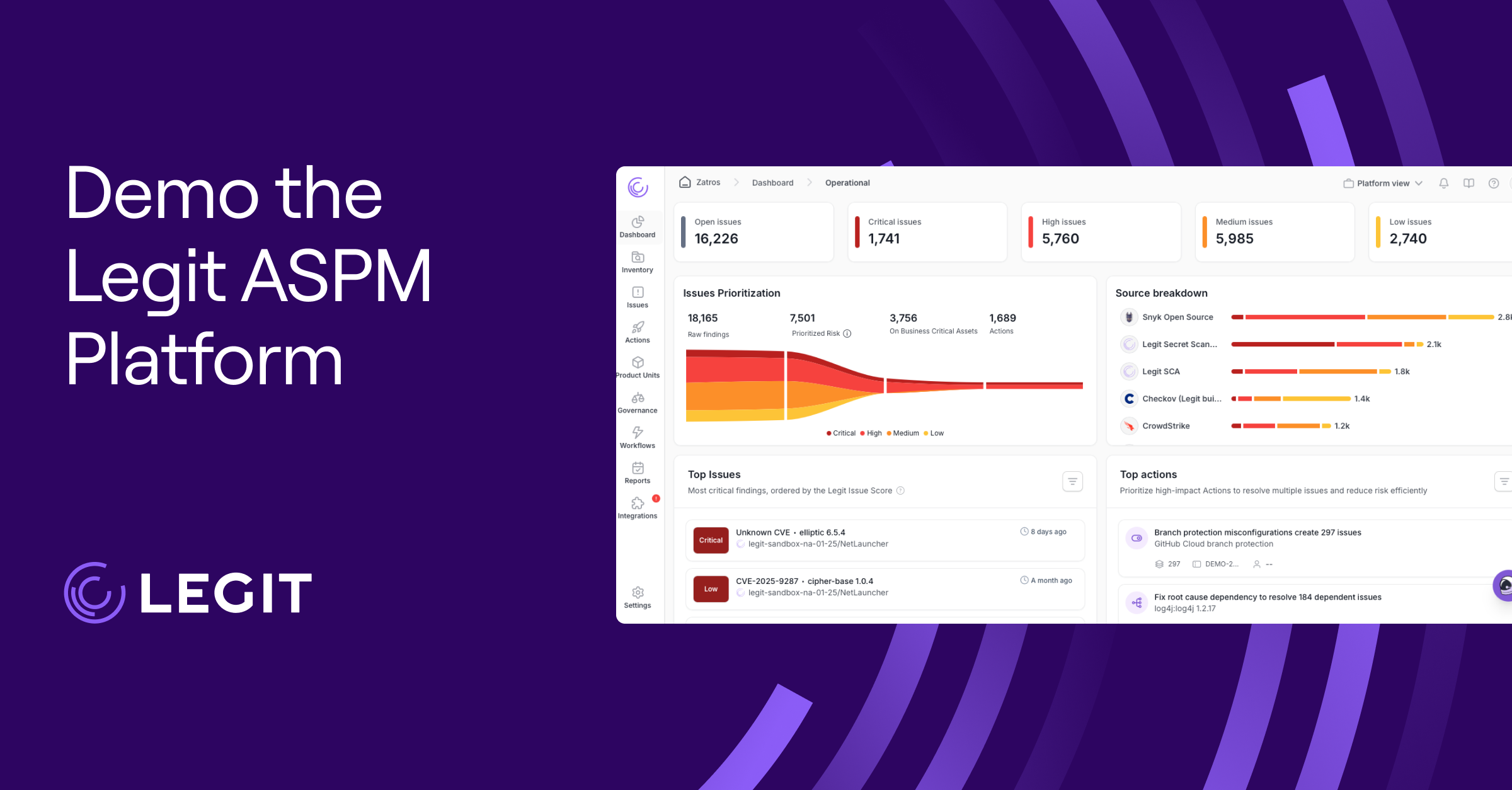Microservices simplify how you build, scale, and update applications, but they also expand your attack surface. With dozens or even hundreds of independent services communicating across APIs and networks, each interaction becomes a potential entry point for attackers—and without proper guardrails, one compromised service could put your entire environment at risk.
That’s where microservices security comes in. It hardens individual services and protects the distributed system from data leaks, lateral movement, and attackers. This builds resilience into your applications and keeps services functional under pressure.
What Are Microservices?
Microservices split a large application into small, focused components that handle one task. Developers build these services using different languages, frameworks, or databases, and they communicate over lightweight APIs based on what best suits each task. This flexibility makes microservices popular among fast-moving development teams trying to scale complex systems efficiently.
But this architecture does more than speed up builds. It adds resilience. If one service fails, it doesn’t take the whole application down, reducing the blast radius of incidents and supporting rapid iteration. Think of it as breaking a monolith into parts that can evolve independently. Unlike traditional monolithic architecture, where a single failure can halt the entire system, microservices provide fault tolerance by design.
What Is Microservices Security?
Microservices security refers to the safeguards you put in place to protect each service within a distributed application.
In monolithic applications, you secure one large unit. With microservices, you secure dozens—or even hundreds—of smaller ones, each with its own function, data flow, and communication patterns. This shift creates a broader attack surface. Without clear boundaries, one vulnerable service can expose the rest. Security in microservices architectures means addressing risks at the code, API, container, and network levels everywhere those services interact.
A strong microservices security strategy supports application resilience. Whether managing authentication and authorization in microservices or locking down service-to-service communication, the goal is to build security into the architecture so threats can’t move freely across your stack. A single point of failure won’t snowball into a system-wide breach.
Benefits of Microservices Security
Strong microservices security supports resilience, agility, and trust across your system. Here are some of the key benefits it brings:
- Reduces data breach risks: Each microservice has its own access point, which can increase exposure. Applying microservices security best practices—like enforcing least privilege access, using encryption, and isolating services—prevents unauthorized access and threats from spreading between services.
- Preserves system integrity: Strong isolation and communication controls keep the rest of the system running, even if one service fails or an attacker compromises it. This containment protects the reliability and continuity of the broader application.
- Builds customer trust: Organizations in finance, healthcare, and other data-sensitive industries need to ensure compliance and reassure customers that their information is safe. A comprehensive security strategy helps them meet this goal.
- Enables safer innovation: When you understand how to secure microservices at every layer—API, container, code, and runtime—you can release updates faster through continuous delivery pipelines without increasing risk.
How to Secure Microservices: 7 Best Practices
Security for microservices demands a system-wide strategy. Here’s how to implement security in microservices effectively—without sacrificing speed or agility:
1. Securing Secrets
Exposed credentials are a top target in modern attacks. Instead of storing secrets in code or configuration files, use a secure secrets manager, like AWS Secrets Manager, HashiCorp Vault, or Azure Key Vault. These tools protect API keys and tokens while offering versioning, audit logs, and automatic rotation. Define secrets with the smallest necessary access and encrypt them at rest and in transit.
If you aren’t sure what secrets exist in your pipeline, secret scanning tools detect accidentally exposed credentials in your repositories and pipelines before they enter production. Pairing scanning with strong management practices closes off one of the most easily exploited security vulnerabilities in microservices systems.
2. Authentication and Authorization
Each microservice must validate the requester's identity and determine whether to allow the request. Implement centralized authentication for users (via OAuth 2.0 or OpenID Connect) and enforce fine-grained authorization at the service level. Internally, issue short-lived tokens and validate them consistently. Tools like Open Policy Agent (OPA) or Styra DAS can help you manage policy-as-code at scale.
3. Securing Communication Between Microservices
Encrypt the data that goes between services. Transport layer security (TLS) is the baseline, but mutual TLS (mTLS) adds another layer by authenticating both sides of a connection. This is especially useful in zero-trust environments, where no service is inherently trusted.
4. Container Security
Strong container security protects your microservices' environments. Start by using minimal, trusted base images and scanning them regularly for known vulnerabilities. Rebuild and redeploy frequently to apply patches as they're released.
Avoid running containers as root, and enforce runtime controls with security profiles like AppArmor, SELinux, or seccomp. For added assurance, consider image signing to verify the source and integrity of every container before deployment.
5. Centralized Monitoring and Logging
Distributed systems need unified visibility. Aggregate logs and metrics across services to detect unusual behavior, such as traffic spikes or authentication failures. Use tools like Prometheus and Grafana for metrics and integrate with alerting platforms like Datadog or New Relic to catch issues early. Central monitoring also supports faster incident response and better long-term security insights.
6. Secure APIs With an API Gateway
API gateways sit between clients and your services, and they’re a key enforcement point for throttling, request validation, and access control. When configured correctly, gateways help standardize security across your entire microservices environment. You can also offload authentication to the gateway to reduce duplication across services.
7. Automate Testing and Regular Reviews
Security isn’t static. Use both static application security testing (SAST) and dynamic application security testing (DAST) tools to catch issues early. Periodically review policies, secrets, and access controls to close any gaps. You can automate security testing using DevSecOps tools that integrate seamlessly into the development process.
Enhance Microservices Security With Legit Security
Protecting microservices requires securing every layer of the system, not just the edges. From managing secrets and enforcing authentication to hardening containers and maximizing application security testing, each layer helps reduce risk and maintain resilience.
Legit Security makes it easier to implement these protections by integrating seamlessly into your development pipelines, giving you the visibility and control needed to scale security without slowing delivery. Request a demo today.
Microservices Security FAQ
What Are Some Common Risks in Microservices Security?
Microservices increase your attack surface by introducing more services and communication points. Common risks include exposed secrets, insecure APIs, improper service authentication, denial of service attacks, and misconfigured containers.
Is an API Gateway Necessary for Securing Microservices?
An API Gateway isn’t strictly required, but it’s highly recommended. It centralizes authentication, rate limiting, and traffic control, enforcing consistent security policies across all services. It also restricts public exposure by controlling which services are directly accessible.
What Are the Challenges of Microservices Architecture?
Microservices offer scalability and flexibility, but they come with added complexity. Teams must implement security across more moving parts, each with their own configurations, data flow, and potential vulnerabilities. Monitoring and identity management are harder to coordinate at scale.
How Do You Monitor Security Across Microservices?
Effective monitoring requires centralized logging, metrics, and alerting across all services. Use tools like Prometheus, Grafana, or commercial platforms like Datadog to detect unusual behavior. Combine regular reviews and vulnerability scanning to maintain visibility and control.
Download our new whitepaper.


